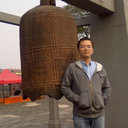[Treatment of thoracic and abdominal cavity perforation complicated by Henoch-Schonlein purpura nephritis in a patient with high-voltage electric burn].
Keywords
Abstract
A 55-year-old male patient suffered from severe high-voltage electric burn with an area of 20%TBSA full-thickness injury. The injury involved the distal end of left upper limb, right trunk, and whole abdominal wall. Fracture of the 7th-10th ribs was found in the right side of chest, with perforation of abdominal cavity, and bilateral pleural effusion was found. Part of the small intestine was necrotic and exposed. At the early stage, xeno-acellular dermal matrix was grafted after debridement of abdominal wound; peritoneal lavage was performed; negative pressure drainage was performed in orificium fistula of intestine for promoting the adhesion between perforated intestine and abdominal scar. Two orificium fistulas formed after closure of abdominal granulation wound by autologous skin grafting. Eschar of chest wall and denatured ribs were retained. The risk of infection of thoracic cavity was decreased by promoting the adhesion between lung tissue and chest wall. During the treatment, the patient was diagnosed with Henoch-Schonlein purpura nephritis by renal biopsy, with the symptoms of purpura in the lower limbs, heavy proteinuria, severe hypoalbuminemia, edema, etc. After control of kidney damage by immunosuppressive treatment instead of glucocorticoid, alleviation of the levels of proteinuria and blood albumin, free latissimus dorsi myocutaneous flap was excised to repair chest wall, and free skin graft was excised to repair intestinal fistula. After all the wounds were successfully covered, the patient was treated with glucocorticoid combined with immunosuppressants for more than 1 year. The patient was followed up for 3 years, and his renal function was completely recovered with satisfactory clinical outcome.



